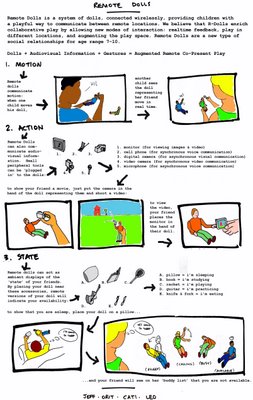If you’re new here, you may want to subscribe to my RSS feed to receive the latest Architectradure’s articles in your reader or via email. Thanks for visiting!
On the canvas, artists can draw with the special “ink” they just picked up from their immediate environment.
My colleague and friend Kimiko Ryokai will join the faculty of the School of Information, Berleley, in January 2007. She will teach in the iSchool and the Center for New Media. She graduated from the Tangible Media Group at MIT Media Lab with Dr. Hiroshi Ishii. She is currently employed at the product design firm, IDEO.
A while back for her PhD, Kimiko designed io brush, a super intuitive platform to paint digitally using colors, patterns, movements that surround us. For her master thesis she invented and researched on Storymat, a pretty mat that stores children’s storytelling play by recording their voices and movements of the toys they play with.
IO brush movie that I recommend watching (25 mb). Delight warrantied.



















